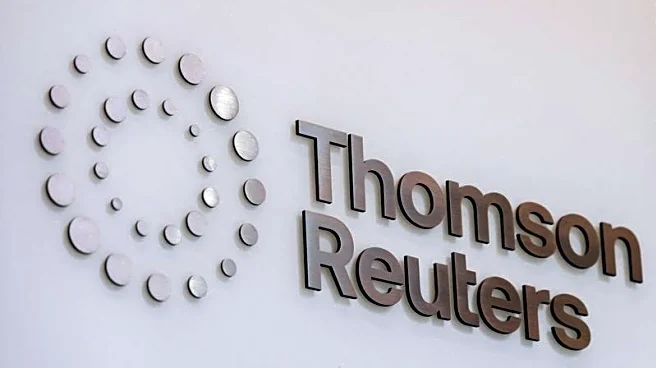What's Happening?
Uber Technologies reported a significant increase in its third-quarter revenue, surpassing Wall Street's expectations. The company achieved a 20% revenue growth from the previous year, reaching $11.2 billion.
Gross bookings rose by 21% to $49.74 billion, exceeding the anticipated $48.95 billion. Uber's CEO, Dara Khosrowshahi, highlighted that this quarter marked the largest trip volume increase in the company's history outside the post-pandemic period. Despite these positive financial results, Uber's shares fell by 6% in early trading. The company's net income nearly tripled to $6.6 billion, driven by a $4.9 billion tax valuation release and a $1.5 billion benefit from equity investment reevaluations. Uber's delivery business also performed well, with revenues of $4.48 billion, surpassing projections.
Why It's Important?
Uber's strong financial performance underscores its resilience and ability to grow despite economic uncertainties. The increase in gross bookings and trip volumes indicates a robust demand for Uber's services, which is crucial for its long-term growth strategy. However, the decline in share price suggests investor concerns, possibly about the sustainability of such growth or broader market conditions. The company's focus on innovation, including the use of artificial intelligence, positions it to continue expanding its service offerings and improve operational efficiency. This performance could influence investor confidence and impact Uber's market valuation in the future.
What's Next?
Looking ahead, Uber has forecasted fourth-quarter gross bookings between $52.25 billion and $53.75 billion, with adjusted EBITDA expected to range from $2.41 billion to $2.51 billion. The company plans to continue leveraging artificial intelligence to enhance its services and explore growth through internal innovations and strategic acquisitions. Stakeholders will be watching how Uber navigates potential economic challenges and whether it can maintain its growth trajectory. The company's ability to adapt to changing market conditions and consumer preferences will be critical in sustaining its competitive edge.












